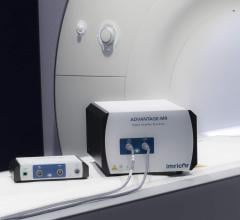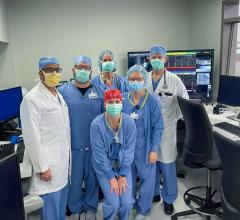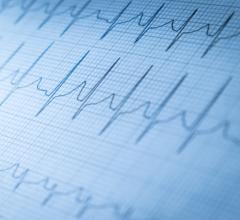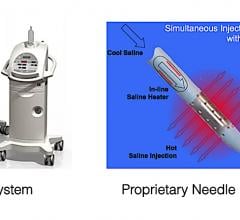
May 21, 2018 — Complete pulmonary vein isolation (PVI) was achieved in more than 99 percent of patients in a first-in-man study using the Kardia Globe multi-electrode array catheter ablation system. The late-breaking study was presented at Heart Rhythm 2018, the Heart Rhythm Society’s 39th Annual Scientific Sessions.
The Kardium Globe Mapping and Ablation System is a complete, combined system intended to assist in the diagnosis and treatment of atrial fibrillation (AF). A big question for technological advancement of Afib catheter ablation has been whether the creative new concept of a diagnostic mapping options of single-tip and basket catheters combined with the simplicity of using balloon catheters for ablation would work to quickly and accurately to isolate the pulmonary veins.
Authors of the study said the new device offers a easy handling and fast single-shot pulmonary vein isolation (PVI). It continuously updates several mapping types (e.g. voltage mapping, activation mapping) from all 122 electrodes on the device in real-time during ablation, This feature demonstrated in study a unique capability to go beyond PVI for substrate description plus ablation, and for rotor mapping plus rotor ablation with a single catheter.
The Globe device has a distal multi-electrode array consisting of 16 ribs with 122 gold-plated electrodes. It was used prospectively in 60 patients (mean age 64±10 years, 58 patients with paroxysmal AF) in two centers (Hirslanden Hospital, Zurich and Heart Center, Leipzig). Each electrode can record electrograms, ablate, pace and can measure tissue contact, temperature, and current. Ablation can be done with up to 24 electrodes simultaneously. The amount of current delivered to each electrode to maintain the target electrode temperature (57-65°C) is automatically controlled.
Immediate automatic down regulation of power is provided in case of intermittent loss of contact from such causes as deep breath.
The study's first six and 12-month follow-up data show complete PVI) was achieved in 234/236 veins (99.2 percent) of patients. Procedure time and fluoroscopy time measured 147±45 and 11±4 minutes, respectively. In two patients, cardiac tamponade was observed (3 percent), and no cases of stroke, PV stenosis, esophageal perforation or phrenic nerve paresis were observed.
Find links to all the Heart Rhythm 2018 Late-breaking Studies

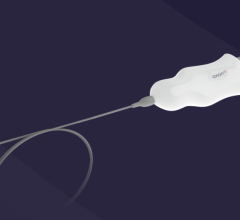
 October 10, 2023
October 10, 2023 

